Positive reinforcement is a method of training that became popular with dog trainers in the 1990s. It was first used during the 1940s-60s to work with marine animals but it was only later successfully applied to dogs. As taught today, this training method usually uses a clicker and treats but it can also use toys or anything else that motivates a dog.
Most of us have heard of Pavlov. He was a scientist who studied behavior and came up with a theory called "classical conditioning." In the most well-known example, his dogs would salivate when his lab technician came to feed them. The dogs were associating the lab technician with their food -- quite a normal response. Most of us associate one thing with another. We may associate a fire alarm with feelings of fear and anxiety, for example. Perhaps we get a headache when we recall taking tests in school. These may be conditioned responses to stimuli - the fire alarm, the tests we took in the past. Pavlov designed an experiment that used bells to call the dog to their food. In the experiment, the dogs began to salivate in response to the bells. They were associating the bells with their food, just as they had associated the lab technician with the food earlier. Pavlov explained that a neutral stimulus (the bell) was creating a conditioned response (the salivation). This is called "classical conditioning." It is a simple association and a conditioned response.
Psychologist and researcher B.F. Skinner learned from Pavlov's experiments. He studied the effects of "reinforcers," both rewards and punishers. Reinforcers are stimuli that have an effect on a conditioned response. Rewards increase the frequency of an action. Punishers decrease their frequency. Positive reinforcers are anything that you add to increase the likelihood of a behavior. Adding food as a reward is a definite positive reinforcer for most dogs.
You may wonder what these theories have to do with dog training. A lot, actually. If you teach (condition) your dog to do something, such as sitting, you can use these principles. Many owners and trainers use a clicker to click when the dog does what they want (such as sitting). Then they reward the dog. The dog comes to associate the click and the reward with the behavior. Soon the dog is sitting when asked. You have used positive reinforcement to teach the dog to sit. That's the theory behind positive reinforcement.
Of course, some people point out that dogs trained by means of positive reinforcement may be very food-motivated. This may or may not be true. It is not always necessary to train a dog using foods. You can use anything that motivates the dog, whether it's a toy, play time, going for a walk with your dog, or lots of belly rubs. However, food is the reward that's used most often by owners and trainers.
Many people prefer to train dogs using positive reinforcement because it is more enjoyable for dogs than traditional dog training or other methods. Using food, toys and a great deal of praise in training can make training more fun for dogs than methods that call for choke collars, repetitions or dominance. Positive reinforcement is also a good way to work with dogs that have already have problem behavior since it usually decreases fear. Dogs with behavior problems can often be re-trained using this method.

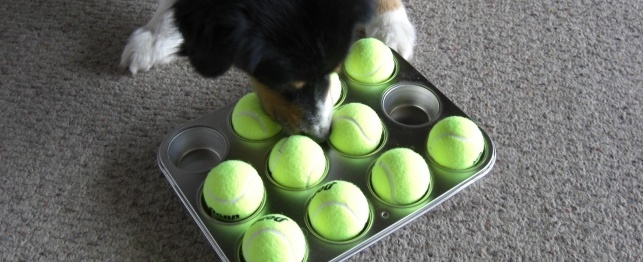 The Fabulous Muffin Tin Game for Dogs
The Fabulous Muffin Tin Game for Dogs
The Fabulous Muffin Tin Game for Dogs
The Fabulous Muffin Tin Game for Dogs
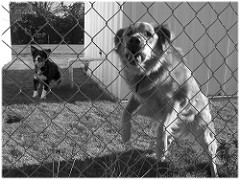 Stop Dog Barking: The Real Approach To Train Your New Family Dog.
Part of training your dog to stop dog barking is learning t
Stop Dog Barking: The Real Approach To Train Your New Family Dog.
Part of training your dog to stop dog barking is learning t
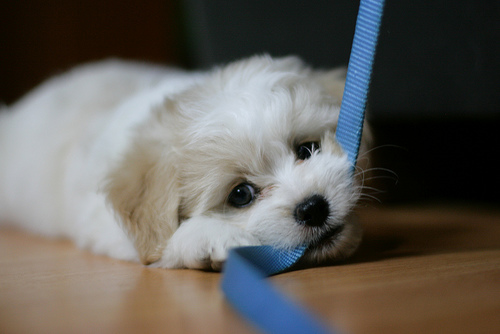 Teaching Your Dog Polite Leash Skills - Canine Manners 101 Dog Training Series
Teaching Your Dog Polite Leash Skills
This article i
Teaching Your Dog Polite Leash Skills - Canine Manners 101 Dog Training Series
Teaching Your Dog Polite Leash Skills
This article i
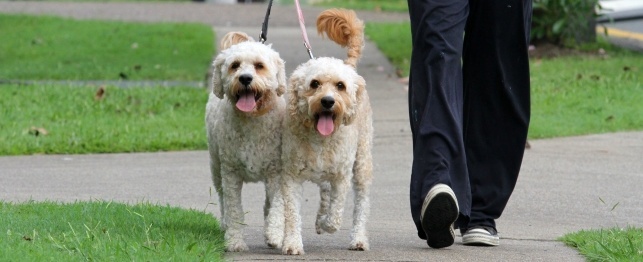 How Much Exercise Does My Dog Need?
How Much Exercise Does My Dog Need?
How Much Exercise Does My Dog Need?
How Much Exercise Does My Dog Need?
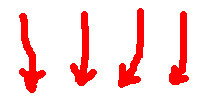 Stop Dog Digging: Find Fun And Easy Ways To Train Your Dog
A lot of people are trying to maintain a clean home these
Stop Dog Digging: Find Fun And Easy Ways To Train Your Dog
A lot of people are trying to maintain a clean home these